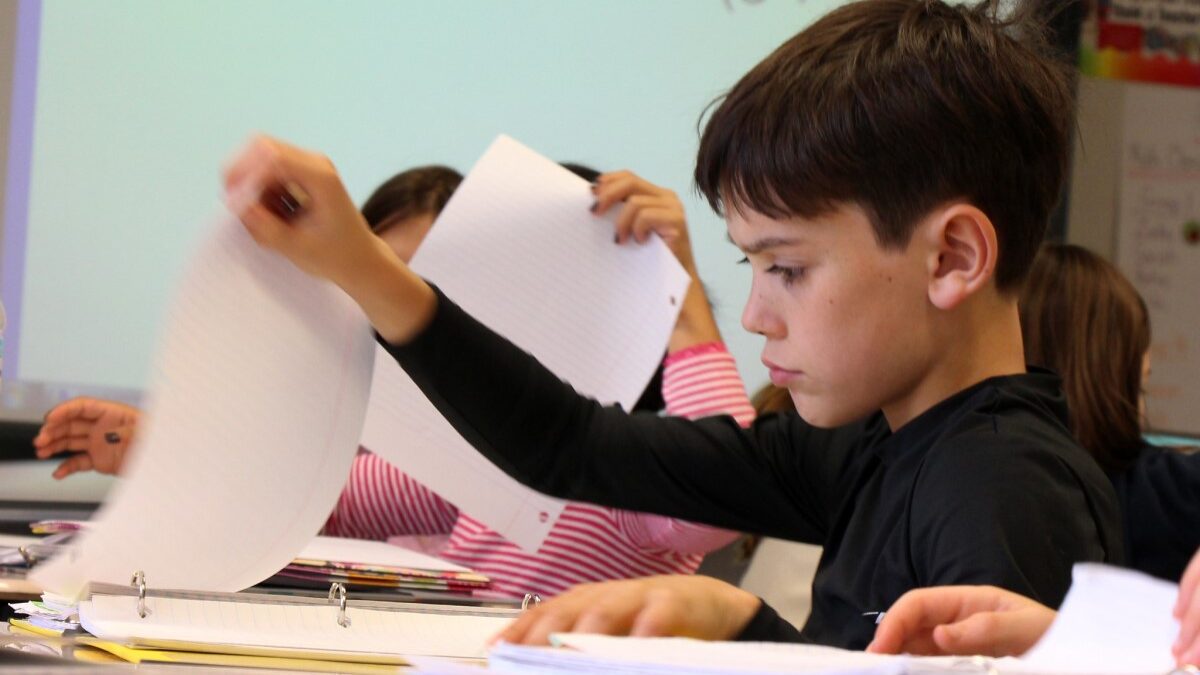Since the beginning of the 20th century, mathematics education has swung between the “drill-and-kill” emphasis on calculation and repetition and the inquiry-based emphasis on problem-solving and experiential learning. Unlike a physical pendulum that gradually settles at a middle ground, each swing of this pendulum has become more extreme. A more “back to basics” curriculum might hail the requirement that students show their work as an essential part of rote learning, while a more progressive curriculum might abhor the same requirement as an oppressive instrument of white supremacy culture.
With such divisiveness leading both sides to miscategorize and misrepresent the other, mathematics education needs voices that can cut through these divisions. Math teaching needs a non-reactionary via media that marries the conceptual and the procedural, empowers the teacher to lead but invites the student to participate, and provides tangible recommendations for the classroom that focus on student understanding. It is to this difficult project that longtime math teachers Barry Garelick and James Wilson makes a contribution in their new book, “Traditional Math.”
Much of “Traditional Math” reads like the teacher’s guide to a K-8 textbook series, offering helpful insights into almost every topic found in the elementary and middle school scope and sequence, beginning with counting and ending with the quadratic formula. Many of the recommendations found in each section are time-tested, derived from Wilson and Garelick’s experience in elementary and middle school classrooms, respectively.
The recommendations are also eminently practical, providing example problems, identifying key questions, presenting powerful concept-to-concept transitions, anticipating potential student misconceptions, synthesizing topics, and revealing hidden steps in complex procedures. While both authors are staunch advocates of explicit instruction, they borrow unapologetically from a variety of curricula, employing everything from Saxon-style mental math warm-ups to Singaporean tape diagrams and place value charts. This enables teachers of all pedagogical persuasions to glean genuine insights into even the most difficult-to-teach concepts that can be easily translated into the classroom.
Garelick and Wilson are no theory-mongers. They are teachers, and they stay committed throughout their book to the difficult task of helping fellow teachers to guide students through the difficulties they may encounter in their study of mathematics.
Pedagogically, Garelick and Wilson articulate what they term a “traditional method” that combines “explicit instruction, worked examples, and scaffolded problems,” a methodical approach to teaching math that leads students slowly and carefully through the nuances of a given concept. While many modern textbooks look to employ a dynamic activity that plunges students into a mathematical idea and asks them to create solutions to challenging tasks, “Traditional Math” begins with familiar problems, slowly increasing the difficulty and checking for understanding at every turn.
Instead of throwing students into the deep end, hoping their struggles will inspire insightfulness, Garelick and Wilson try to keep struggling to a minimum. Instead, they aim “to have students be successful” under the “guiding principle that struggling to learn the breaststroke is not the same as struggling to keep from drowning.”
In so doing, Garelick and Wilson resist the temptation to distort the discipline of mathematics to appeal to student interests, employing real-world scenarios to make math seem relevant to the practicalities of everyday life. Rather, they trust the enduring qualities of mathematics will be interesting enough as long as students can understand the concepts fully.
It is towards this careful understanding that “Traditional Math” orients itself, presenting knowledge incrementally by consistently asking “What do you see in these sets of problems?” “What should I do next?” and “Can anyone explain why doing that works?” These kinds of scaffolded questions remain traditional, centering the guidance of the teacher and prioritizing procedural fluency, but they manage to avoid some of the key pitfalls of direct instruction. Those include an overreliance on rote learning, an over-commitment to lecture-style instruction, and a deemphasis of conceptual understanding.
Garelick and Wilson’s “traditional method” is no dull, disconnected slog through a series of repeat-after-me formula memorizations. It is instead, in a certain sense, progressive, using the natural momentum of the discipline of mathematics to draw students into the learning process.
Although the majority of their pedagogical recommendations are sound, Garelick and Wilson do err on the procedural side of the mathematics education debate, leaving them perhaps too over-critical of certain progressive-sounding teaching strategies that do have lasting power in the classroom. Their condemnation of “present-day textbooks’” tendency to “start with more difficult problems” allows them to underscore the power of a gradual, scaffolded approach, but such a dismissal sacrifices the potential that challenging problems can have both to inspire thoughtfulness and to develop moral virtue.
Their claim that “students can be successful with math without being able to explain why or how what they are doing works” feels significantly overstated, and falls out of line with their own commitment to student understanding. Also, their dogged devotion to the “I do, We do, You do” lesson-planning strategy certainly provides a clear classroom structure for teachers to imitate, but it severely limits the creativity of the teacher and it forces form to drive content. While none of these moments detract considerably from their larger project, their tendency to overstate certain rejections of modern pedagogy robs some of their strong recommendations of force.
Such shortcomings aside, the primary achievement of “Traditional Math” lies in its attempt to carve out what some call a “liturgical” vision for mathematics education. In “Beauty for Truth’s Sake,” Stratford Caldecott calls for a recovery of “liturgy” in the teaching and learning of the quadrivial arts, structured around “a set of rituals and a way of organizing time and space that situates us in relation to the beginning and end of things.”
In their conclusion, Garelick and Wilson frame their vision in terms of “ritual,” eschewing novel or flashy techniques and pointing educators instead towards a deep, slow, patient, intentional pedagogy that invites students into a rich tradition of meaningful ideas. This orients the mastery of “mathematical procedures” towards a “deeper understanding,” developing habits and practices in the classroom out of which true creativity can emerge.
For, as Caldecott reminds us, it is liturgy that “has always inspired art.”









